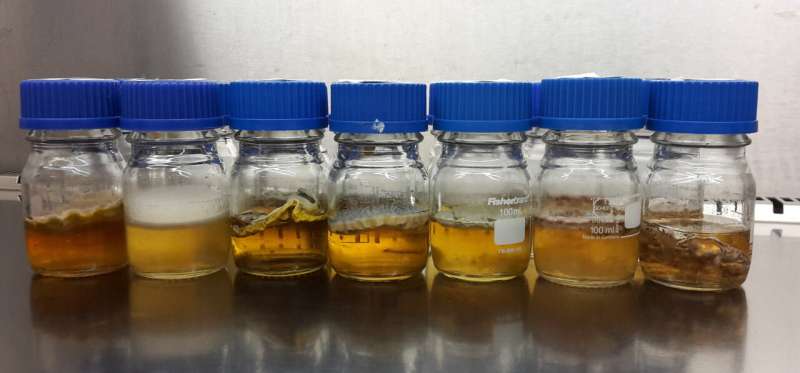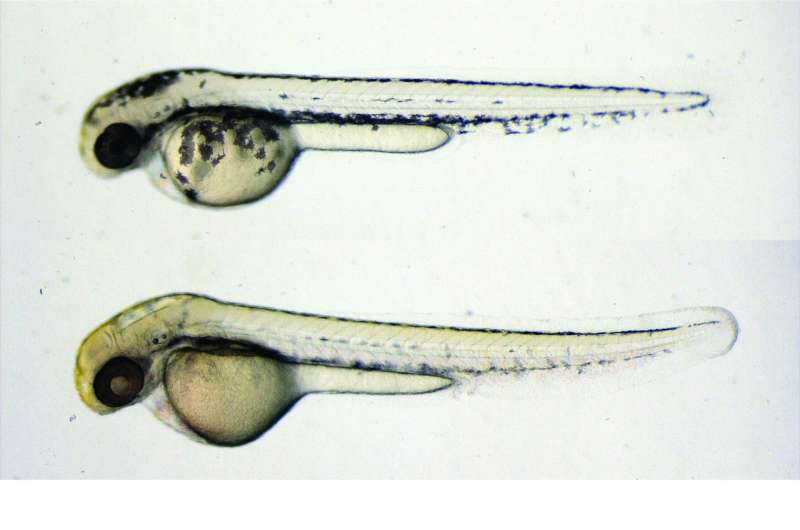Using fungi to search for medical drugs

An enormous library of products derived from more than 10,000 fungi could help scientists find new drugs. Researchers from the group of Jeroen den Hertog at the Hubrecht Institute, in collaboration with researchers from the Westerdijk Institute and Utrecht University, have set up this library and screened it for biologically active compounds. They tested the biological activity of these fungal products first using zebrafish embryos.
The researchers chose zebrafish embryos because they are ideal for the analysis of effects on many cell types at the same time in a functioning organism, and because zebrafish are physiologically very similar to humans. They have previously found useful compounds, including the cholesterol-lowering drug lovastatin, a compound produced by the fungus Aspergillus terreus. The library of fungal products offers ample opportunity to search for new drugs. The results of this research were published on November 26 in the scientific journal Scientific Reports.
Jelmer Hoeksma, one of the researchers at the Hubrecht Institute, says, "Every year, new compounds produced by fungi are identified, but so far, we have only investigated a very small subset of all existing fungi. This suggests that many more biologically active compounds remain to be discovered."
The collaboration with the Westerdijk Fungal Biodiversity Institute, home to the largest collection of live fungi in the world, enabled the researchers to set up a large library of filtrates derived from more than 10,000 fungi. A filtrate contains all the products that the fungus excretes. To search for therapeutic compounds, the researchers investigated the effects of this large library of fungal products first on zebrafish embryos.
This enabled the researchers to study effects on living organisms during development. Zebrafish are vertebrates that are physiologically very similar to humans, and are often used to test drugs for a variety of disorders. Within a few days, these embryos develop most of their organs, making biological activity of the fungal compounds readily detectable. In addition, comparison to known drugs may result in identification of new drugs and the underlying mechanisms of action of these compounds.

Pigmentation
The researchers found 1526 filtrates that contain biologically active compounds with an effect on zebrafish embryos, from which they selected 150 filtrates for further analysis. From these, they isolated 34 known compounds, including the cholesterol lowering drug lovastatin, which was produced by the fungus Resinicium furfuraceum. Until now, it was unknown that this fungus produces lovastatin. In addition, the researchers found filtrates that affect pigmentation in zebrafish embryos. Other studies have shown that factors involved in pigmentation can also play a crucial role in the development of skin cancer. The researchers are currently isolating the active compounds that cause pigmentation defects in zebrafish embryos from the filtrates.
This study underscores the large variety of biologically active compounds that are produced by fungi and the importance of further investigating these compounds in the search for new drugs. Hoeksma says, "The large library of fungal filtrates that we have set up can also be tested in many other systems, such as models for antibiotic resistance in bacteria and tumor development, making this study only the tip of the iceberg."
More information: Jelmer Hoeksma et al. A new perspective on fungal metabolites: identification of bioactive compounds from fungi using zebrafish embryogenesis as read-out, Scientific Reports (2019). DOI: 10.1038/s41598-019-54127-9
Journal information: Scientific Reports
Provided by Hubrecht Institute

















